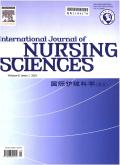Childbirth experience assessment tools based on COSMIN guidelines: A systematic review
IF 3.1
3区 医学
Q1 NURSING
引用次数: 0
Abstract
Objective
This study aimed to systematically evaluate the measurement characteristics and methodological quality of childbirth experience assessment tools, with a view to informing the selection of healthcare professionals who can provide high-quality assessment tools.
Method
A systematic search was performed on specific databases: PubMed, Web of Science, Embase, CINAHL, SinoMed, China National Knowledge Infrastructure (CNKI), and Wanfang, from inception to February 29, 2024. The researchers retrieved studies on the measurement attributes of the childbirth experience assessment tool, and traced back the references of the included studies to supplement relevant literature. According to the inclusion and exclusion criteria, screening and data extraction were independently undertaken by two reviewers. Two researchers individually used the Consensus-based Standards for the Selection of Health Measurement Instruments (COSMIN) Risk of Bias Checklist to assess the methodological quality of the scale, applied the COSMIN criteria to evaluate the measurement properties of the scale, and used a modified Grading of Recommendations, Assessment, Development, and Evaluation (GRADE) system to assess the certainty of evidence.
Result
A total of 15 studies were included to evaluate the psychometric properties of 11 childbirth experience assessment tools (including different language versions). Eight studies’ methodological quality of content validity was doubtful, and the remaining studies did not report content validity. None of the tools reported measurement error, cross-cultural validity, or responsiveness. In light of the questionable or unreported content validity of the tools, the evidence quality was deemed moderate or below. Consequently, the 11 assessment tools were recommended as grade B.
Conclusion
In contrast, the Questionnaire for Assessing the Childbirth Experience (QACE) is recommended for provisional use, given its relatively good methodological and measurement attributes and appropriate content for evaluation. However, further validation of other measurement properties is needed.
基于COSMIN指南的分娩经验评估工具:系统综述
目的系统评价分娩体验评估工具的测量特征和方法学质量,为选择能够提供高质量评估工具的医护人员提供参考。方法系统检索PubMed、Web of Science、Embase、CINAHL、SinoMed、CNKI、万方等数据库,检索时间为成立至2024年2月29日。检索有关分娩体验评估工具测量属性的研究,并追溯纳入研究的参考文献,补充相关文献。根据纳入和排除标准,筛选和数据提取由两名审稿人独立进行。两位研究者分别使用基于共识的健康测量工具选择标准(COSMIN)偏倚风险检查表来评估量表的方法学质量,应用COSMIN标准来评估量表的测量特性,并使用改进的建议、评估、开发和评价分级(GRADE)系统来评估证据的确定性。结果共纳入15项研究,评估了11种分娩体验评估工具(包括不同语言版本)的心理测量特性。8项研究的内容效度方法学质量值得怀疑,其余研究没有报告内容效度。没有任何工具报告测量误差、跨文化有效性或响应性。鉴于这些工具的内容有效性存在问题或未报告,证据质量被认为是中等或低于中等。结论分娩体验评估问卷(QACE)具有较好的方法学和测量属性,且评估内容适宜,建议暂采用。然而,需要进一步验证其他测量特性。
本文章由计算机程序翻译,如有差异,请以英文原文为准。
求助全文
约1分钟内获得全文
求助全文
来源期刊

International Journal of Nursing Sciences
Nursing-Nursing (all)
CiteScore
6.10
自引率
2.60%
发文量
408
审稿时长
25 days
期刊介绍:
This journal aims to promote excellence in nursing and health care through the dissemination of the latest, evidence-based, peer-reviewed clinical information and original research, providing an international platform for exchanging knowledge, research findings and nursing practice experience. This journal covers a wide range of nursing topics such as advanced nursing practice, bio-psychosocial issues related to health, cultural perspectives, lifestyle change as a component of health promotion, chronic disease, including end-of-life care, family care giving. IJNSS publishes four issues per year in Jan/Apr/Jul/Oct. IJNSS intended readership includes practicing nurses in all spheres and at all levels who are committed to advancing practice and professional development on the basis of new knowledge and evidence; managers and senior members of the nursing; nurse educators and nursing students etc. IJNSS seeks to enrich insight into clinical need and the implications for nursing intervention and models of service delivery. Contributions are welcomed from other health professions on issues that have a direct impact on nursing practice.
 求助内容:
求助内容: 应助结果提醒方式:
应助结果提醒方式:


